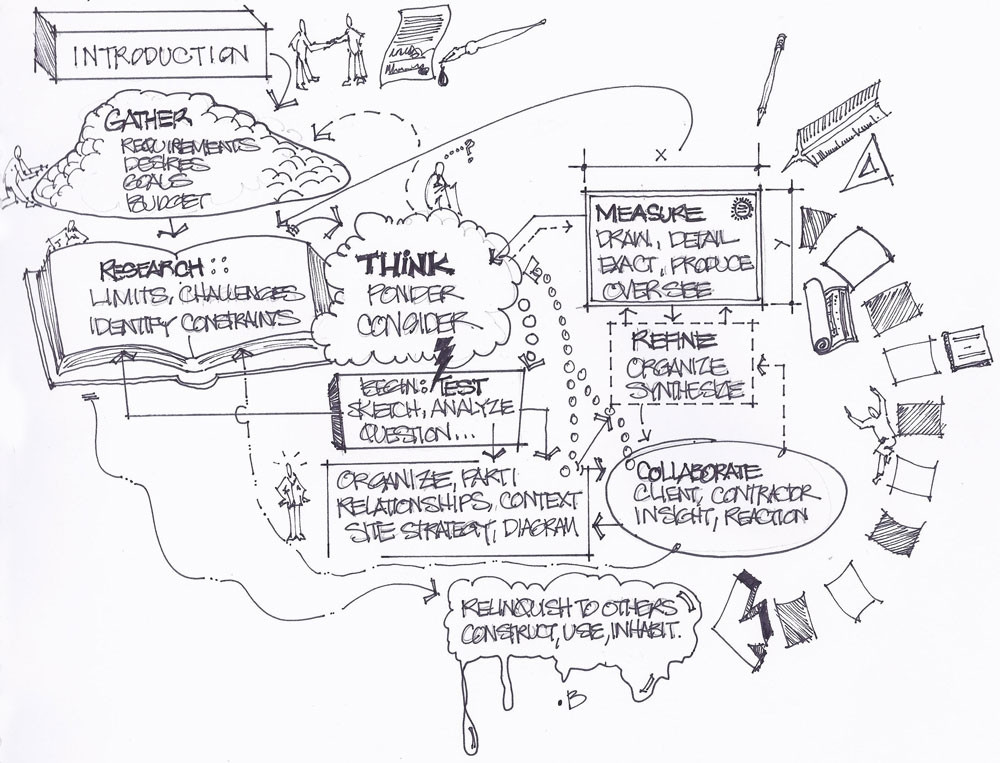There are no shortcuts to excellence. An ever present tension in architectural practice derives from the need to not only work well, but to do so as efficiently as possible. Each project we undertake represents a leap of faith - on everyone's part - on our ability to arrive at an optimum result without actually knowing what that result will be, or even exactly how we will arrive there.

We employ a proven methodology (discussed in the 'Approach' section of this website) to provide a reliably effective and productive structure to work within for all of our projects. Each project becomes a sequence of smaller projects, identified as phases. Each phase builds on the integrity of completed work. We move through the process with a relatively well defined sense of where we stand with respect to our overall progress.
That said, how each project actually unfolds is invariably unique to that project. I am reminded of the very predictable unpredictability of wilderness travel, where the most carefully planned itinerary inevitably faces revision as the extant variability and realities of the wild are actually encountered over time. It is critical to have a realistic and viable overall plan, but equally important to be flexible and adaptable to emerging situations.
One thing I have learned for certain is not to rush the early, foundational work. The pre-design research is where, for me, the spirit of a project is born. Getting to absolute clarity about the true aspirations of what we will be creating, as well as the limitations we will be working within, is so essential; nothing ensures true productivity downstream better.
The incredible power of three dimensional digital technologies empower us to rapidly create a buildable work product, and allow us to explore virtually unlimited variations on ideas at any level of development throughout the design process. None of which amounts to anything of value if the work is being conducted with a lack of commitment to a compelling architectural idea. Any technician can assemble a set of documents to build from. But only an architect with a passionate sense of clarity can actually create a singular work of architecture appropriate to the particularities of a specific client and site.
